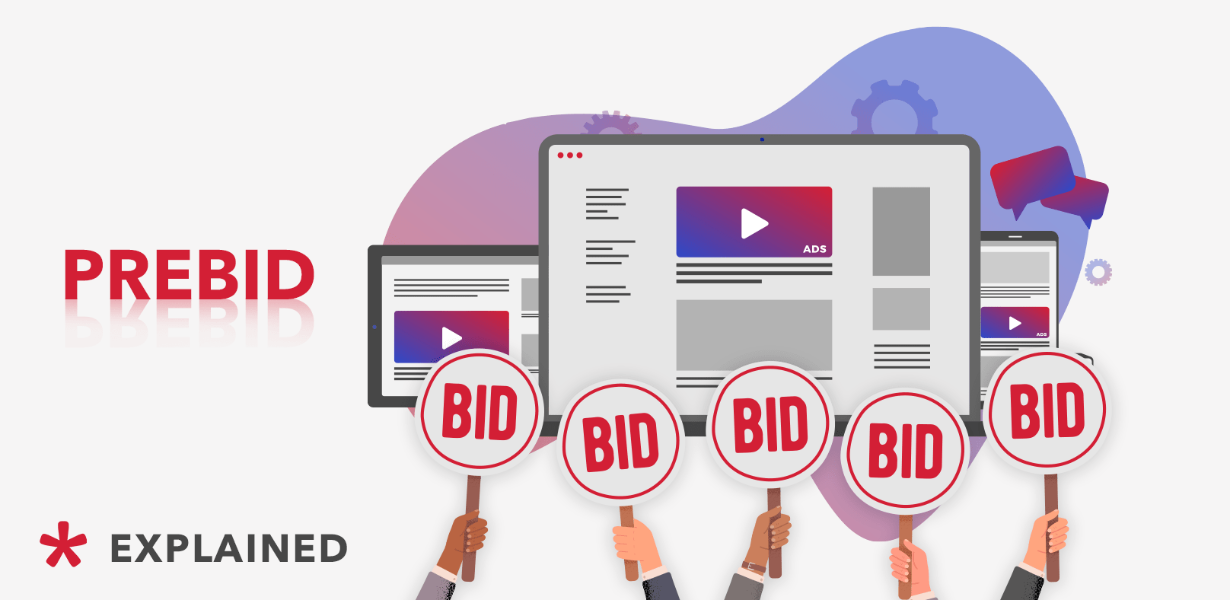
Effortless Integration: A Comprehensive Guide to Implementing Prebid.js for Maximum Revenue
- Post
- August 9, 2023
- Ad Serving Tech, Header Bidding, Prebid.js
- 0 Comments
Welcome to the realm of effortless revenue optimization through Prebid.js integration. In today’s dynamic digital landscape, smart ad monetization is essential for sustaining online businesses. This guide will equip you with the knowledge and tools needed to seamlessly integrate Prebid.js, maximizing your revenue potential while maintaining a smooth user experience.
Understanding Prebid.js: The Backbone of Header Bidding
At its core, Prebid.js is an open-source JavaScript library that empowers publishers to implement header bidding seamlessly. Header bidding, an advanced ad monetization technique, allows multiple demand partners to compete simultaneously for ad impressions. Prebid.js acts as the mediator, orchestrating this competition and ensuring the highest-paying ad wins the slot. This strategic implementation results in increased revenue and improved fill rates.
Prebid.js Components: Decoding the Framework
Prebid.js consists of several components working in tandem to enhance your ad monetization strategy:
Ad Units: These define the inventory you want to monetize. Configuring them correctly is crucial for optimal performance.
Adapters: These establish connections to various demand partners, such as SSPs and exchanges, ensuring a wide range of advertisers compete for your inventory.
Bidders: Bidders represent demand partners and bid on your ad units in real-time. The more bidders you have, the higher the competition.
Auction: The auction is where the real magic happens. Bidders submit their bids, and the highest-paying ad is displayed to the user.
Advantages of Prebid.js Implementation
Increased Competition: Prebid.js facilitates competition among multiple demand partners, driving up the bid prices and maximizing your revenue potential.
Optimized Fill Rates: With simultaneous bidding, the chances of filling ad slots are significantly improved, ensuring minimal wasted impressions.
Flexibility and Control: Publishers have complete control over the demand partners they work with, ensuring a strategic and efficient ad stack.
Reduced Latency: Prebid.js is engineered to minimize latency, ensuring a seamless user experience without compromising on revenue.
Getting Started: Setting Up Prebid.js
Setting up Prebid.js might seem complex, but with our step-by-step approach, it’s a breeze:
Choose Your Ad Units: Determine which ad units you want to monetize and ensure they are properly defined.
Select Demand Partners: Research and select the demand partners (SSPs, exchanges) you want to integrate with Prebid.js.
Integrate Prebid.js Library: Include the Prebid.js library in your website’s codebase.
Configure Bidders and Adapters: Configure the bidders and adapters for each demand partner you’re working with.
Stay tuned for our detailed guide on configuring ad units and integrating Prebid.js with header bidding to maximize revenue.
Configuring Ad Units with Prebid.js
Efficient ad unit configuration is at the heart of successful Prebid.js implementation. It’s essential to define your ad units correctly, including ad sizes, targeting criteria, and placement.
Key Points:
Specify various ad sizes to accommodate different screen types and layouts.
Implement granular targeting to ensure ads are contextually relevant to your content.
Carefully consider ad placements to balance revenue and user experience.
Integrating Prebid.js with Header Bidding
Integrating Prebid.js with header bidding is a strategic move that requires careful execution:
Asynchronous Setup: Implement Prebid.js asynchronously to prevent delays in page loading.
Header Bidding Wrapper: Choose a suitable header bidding wrapper to simplify integration and management.
Ad Unit Setup: Integrate Prebid.js ad units within your header bidding wrapper, ensuring proper configuration.
Testing and QA: Thoroughly test your implementation across devices and browsers to identify and rectify any issues.
Stay tuned for our upcoming guide on header bidding integration with Prebid.js, where we’ll provide detailed steps and best practices.
Fine-tuning for Maximum Yield
Optimization is an ongoing process in the world of ad monetization. Once you’ve set up Prebid.js, focus on continuous improvement:
Bidder Performance: Regularly analyze bidder performance and prioritize higher-performing demand partners.
A/B Testing: Conduct A/B testing with different ad layouts, ad sizes, and placements to identify the best-performing combinations.
Refresh Rates: Experiment with ad refresh rates to strike the right balance between revenue and user experience.
Addressing Common Challenges
While Prebid.js offers numerous benefits, challenges might arise during implementation:
Latency: Overloaded demand partners can lead to increased latency. Regularly monitor and optimize to maintain a smooth user experience.
Bidder Prioritization: Managing multiple bidders can be daunting. Prioritize demand partners based on performance and relevance.
Ad Quality: Ensure ads from demand partners meet your quality standards to maintain a positive user experience.
Monitoring and Optimization
To ensure your Prebid.js implementation remains effective:
Real-time Monitoring: Leverage real-time analytics to track ad performance, identify trends, and make informed decisions.
Data-Driven Insights: Analyze data to understand user behavior, optimize ad placements, and enhance revenue potential.
Final Words
Congratulations! You’ve embarked on a journey to revolutionize your website’s revenue potential through effortless Prebid.js integration. By following the comprehensive steps outlined in this guide, you’re poised to unlock unparalleled revenue streams while maintaining an exceptional user experience. Implement Prebid.js, and let the dollars roll in seamlessly.
Commonly Asked Questions
Q1: What is Prebid.js?
A1: Prebid.js is an open-source JavaScript library that facilitates header bidding, enabling publishers to maximize ad revenue by allowing multiple demand partners to compete for impressions.
Q2: How does Prebid.js work?
A2: Prebid.js acts as a mediator between publishers and demand partners, coordinating real-time bids to determine the highest-paying ad for a given impression.
Q3: What are the benefits of Prebid.js implementation?
A3: Prebid.js increases competition, optimizes fill rates, offers flexibility and control, and reduces latency, all contributing to enhanced ad revenue.
Q4: Is Prebid.js difficult to set up?
A4: While it may seem complex, our comprehensive guide breaks down the setup process into manageable steps, ensuring a smooth integration.
Q5: How can I ensure ongoing success with Prebid.js?
A5: Regularly monitor bidder performance, conduct A/B testing, and stay informed about industry trends to fine-tune your implementation for maximum yield.




